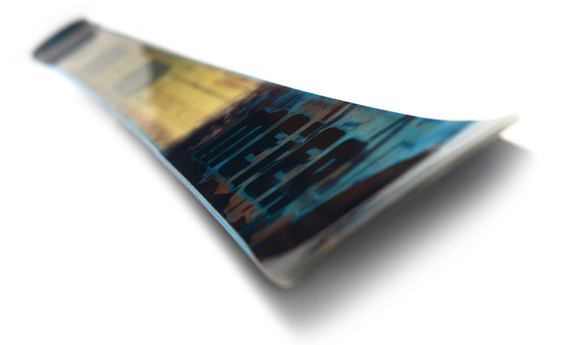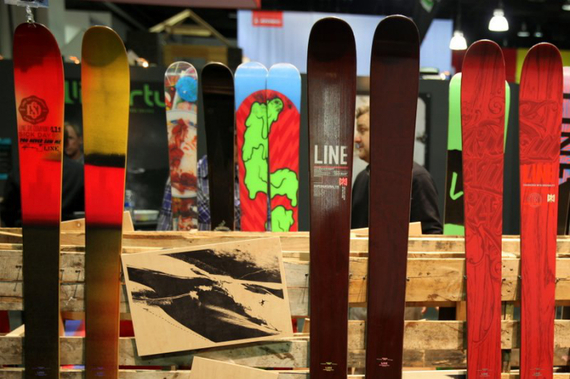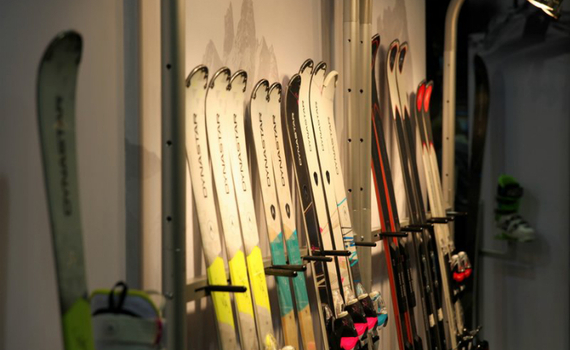The first step towards understanding how a ski will perform is to become familiar with the terms related to a ski's shape. Understanding sidecut, turn radius, and other measurements found on ski specs will help you choose the right pair for your style of skiing.
Dimensions
You may notice three numbers in ski-model listings that are also often printed on a ski's topsheet (such as 124-74-104 for the Rossignol 16Ti). These numbers designate the ski's dimensions.
The first number represents the widest point of the ski's tip (in millimeters); the second, the width of the middle (usually called "waist" or "underfoot"); and the third, the widest point in the tail.
Sidecut
The sidecut is the curvature that runs along the ski's edge from tip to tail and affects how your skis turn.
Remember "straight" alpine skis? Well, even straight skis had a slight hourglass shape. The 6 to 7 millimeter sidecut of an old-school straight ski is barely perceptible when compared to the immediately evident sidecut of a modern-shaped ski that may be triple that amount.
Here's how it is calculated:
Sidecut = [(Tip Width + Tail Width) / 2) - Waist Width
2
The sidecut of the aforementioned Rossignol, for example, comes out to 20mm.
x = [(124 + 104)/2] - 74
2
For a practical method, propping the ski's edge on the floor and measuring the gap from the floor to the ski's waist also shows sidecut.
Turn Radius
A ski's sidecut forms an arc. The radius of the imaginary circle formed by completing that arc is referred to as a ski's turn radius. A deeper side cut means a smaller turn radius, which allows for tighter turns.
Though a ski's three width dimensions are basically consistent in varying length options, the length of the ski affects this arc. A longer ski creates a slightly longer turn radius. Therefore, manufacturers list a ski model's turn radius at a particular length--such as 17 meters at a 180cm ski length.
Of course, a skier can make different types of turns with any ski, but turn radius suggests the natural turning tendency of the ski on "auto-pilot," so to speak.
Underfoot Width
A ski's width underfoot (remember, the middle number) is the starting point for categorizing skis.
- For skiers who like to stick to the groomers, carving skis generally measure under 75mm underfoot.
- Versatile all-mountain models range from 75 to 95mm.
- The 95 to 120mm category suits skiers who spend most of their time off-piste.
- Skis above 120mm provide lots of float for big-mountain powder skiing.
- Ski preferences have been getting wider in recent years. Not too long ago, a 100mm ski was considered a crazy-wide powder ski.
Finding the Right Skis
Skiers looking to make quick, short turns should look for a deeper sidecut, which translates into a shorter turn radius under about 16 meters.
Skiers who like to bomb down the hill making sweeping GS turns should gravitate toward a turning radius above 20 meters.
As the above figures suggest, a turn radius of 16 to 20 meters offers a nice "Goldilocks" range for versatility.
Understanding a ski's specs is really just a start to narrow down the choices. Beyond width dimensions and turn radius, camber and rocker are another whole discussion for modern skis.
Buying skis is a pretty big investment. The best option is to try a few on-snow demos before committing to a pair.
This post originally ran on the Liftopia blog.
By Eric Wagnon, Skiing Examiner (@SkiingExaminer)


